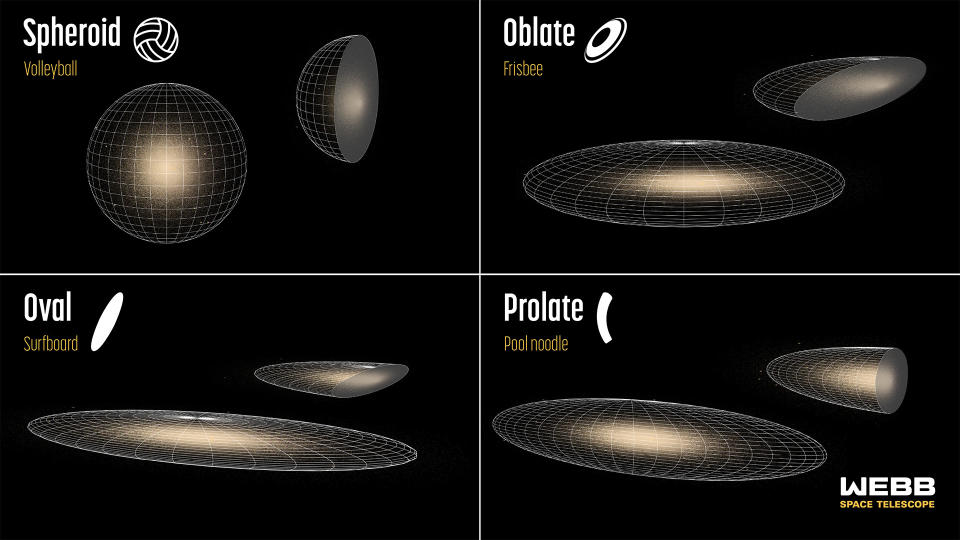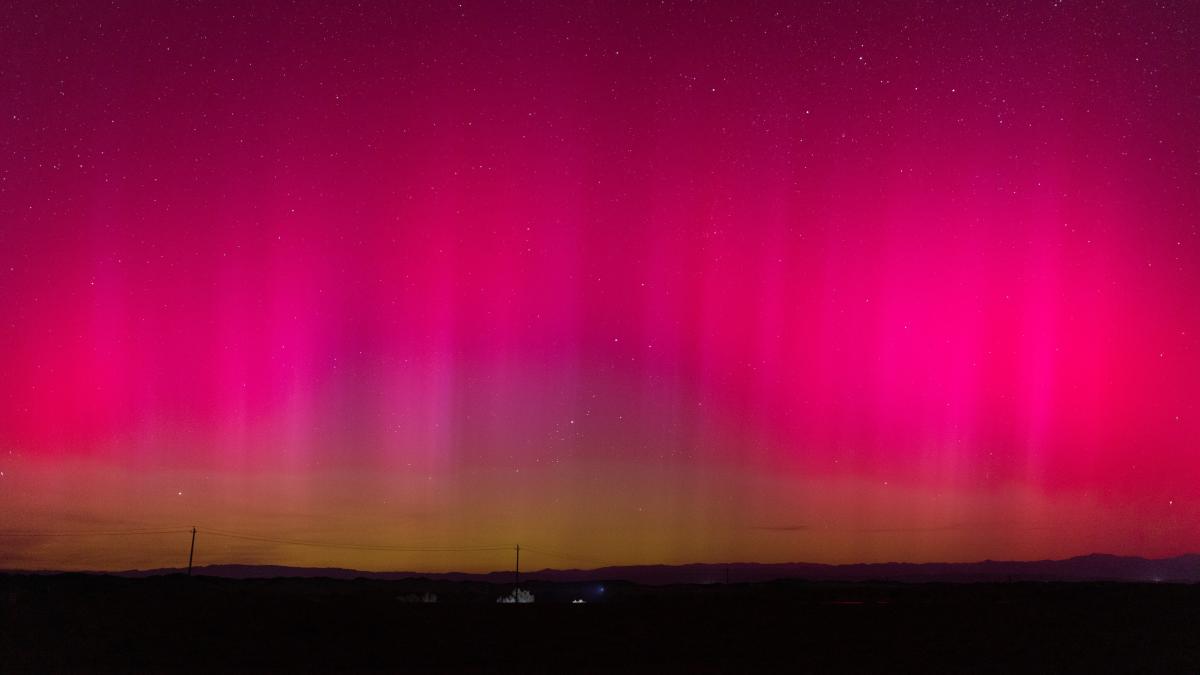Many small galaxies that existed early in the universe’s history are elongated in a surfboard-like shape, pointing to the influence of the cosmic web of matter and constant mergers with other small galaxies, deep observations with the James Webb Space Telescope have found.
New research using the James Webb Space Telescope (JWST) found that dwarf galaxies in the early universe often look flat, either ‘prolate’ (elongated along one axis) or very narrow oblate ovals shaped like a surfboard, whereas others have a more frisbee-like oblate appearance. These galactic frisbees seem to grow more abundant as the universe ages, as do the compact, spheroidal-shaped galaxies.
“Roughly 50 to 80% of the galaxies we studied appear to be flattened in two dimensions,” said Viraj Pandya, a Columbia University astronomer and lead author of a new paper describing the research, in a press statement. “[They] seem to be very common in the early universe, which is surprising since they are uncommon nearby.”
Related: James Webb Space Telescope finds 2 of the most distant galaxies ever seen
The discovery was made using data from CEERS, or Cosmic Evolution Early Release Science, a JWST program to push back the veil and probe the lives of the oldest, faintest galaxies in the universe. It’s an era spanning from 600 million years after the Big Bang to 6 billion years later, during which the galaxies that we see in the universe around us today formed, evolved and matured, from spirals like the Milky Way and the Andromeda Galaxy, to giant ellipticals such as M87.
CEERS builds on previous work by the Hubble Space Telescope, which studied the early universe in its deep-field images and its CANDELS (Cosmic Assembly Near-Infrared Deep Extragalactic Legacy Survey) program. Hubble found that massive galaxies in the early universe tended to take on the form of oblate spheroids, not dissimilar to the elliptical galaxies of today. Less massive and hence fainter galaxies were more difficult for Hubble to detect, but from what it could see, many of them took on an elongated appearance consisting of chains of brighter ‘blobs’, whereas other irregularly shaped dwarfs were nicknamed ‘tadpoles’, ‘nuggets’ or ‘clumps’.
The question was, given Hubble’s limitations, was it seeing a true reflection of the shapes of smaller early galaxies? The JWST’s greater vision has now found that Hubble’s earlier discoveries hold true.
Kartheik Iyer, also of Columbia University, described how the greater vision and sensitivity of the JWST compared to Hubble is changing the study of galaxies in the early universe.
“Identifying additional categories for early galaxies is exciting — there’s a lot more to analyze now,” Iyer said in the press statement. “We can now study how galaxies’ shapes relate to how they look and better project how they formed in much more detail.”
A picture now emerges of how galaxies may have evolved and grown over time.
Matter is distributed throughout the universe primarily in a cosmic web of filaments that span the cosmos. These filaments are predominantly formed from dark matter, with a fraction of normal matter mixed in that forms the galaxies that we observe. The abundance of surfboard-shaped prolate galaxies could be explained by them forming inside haloes of dark matter that are elongated in alignment with their cosmic web filament. Since other dwarf galaxies would also be forming within that filament, mergers would take place along it, leading to the growth of elongated galaxies that look like chains.

RELATED STORIES:
— James Webb Space Telescope discovers oldest and most distant black hole ever seen
— James Webb Space Telescope spies giant cosmic question mark in deep space (photo)
— James Webb Space Telescope spots hint of mysterious aurora over ‘failed star’
Across billions of years, the cosmic-web filaments disperse and grow more diffuse. The merger rate slows down and the fraction of prolate galaxies decreases as they start to spin and adopt a disc-like, oblate structure. Such oblate galaxies are seen to increase from 20 to 60% over time and for a given mass of galaxy.
Similarly, spheroid galaxies also grow more abundant over time, as compact star-forming galaxies in the universe settle down to become the progenitors of the giant elliptical galaxies we see today, or the spheroidal bulges of massive spiral galaxies.
Understanding the evolution of galaxies over cosmic history is a key objective of the JWST. The new findings from CEERS indicate that hierarchical mergers — smaller galaxies merging with larger ones, along the aforementioned cosmic filaments — are key to understanding these varied galaxy shapes.
The findings are set to appear in a paper to be published in a future issue of The Astrophysical Journal.
Signup bonus from




